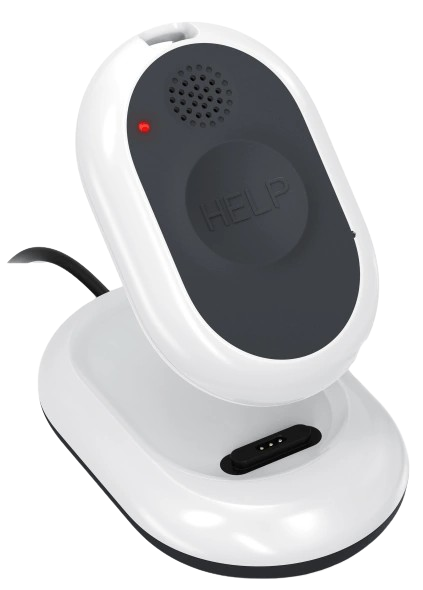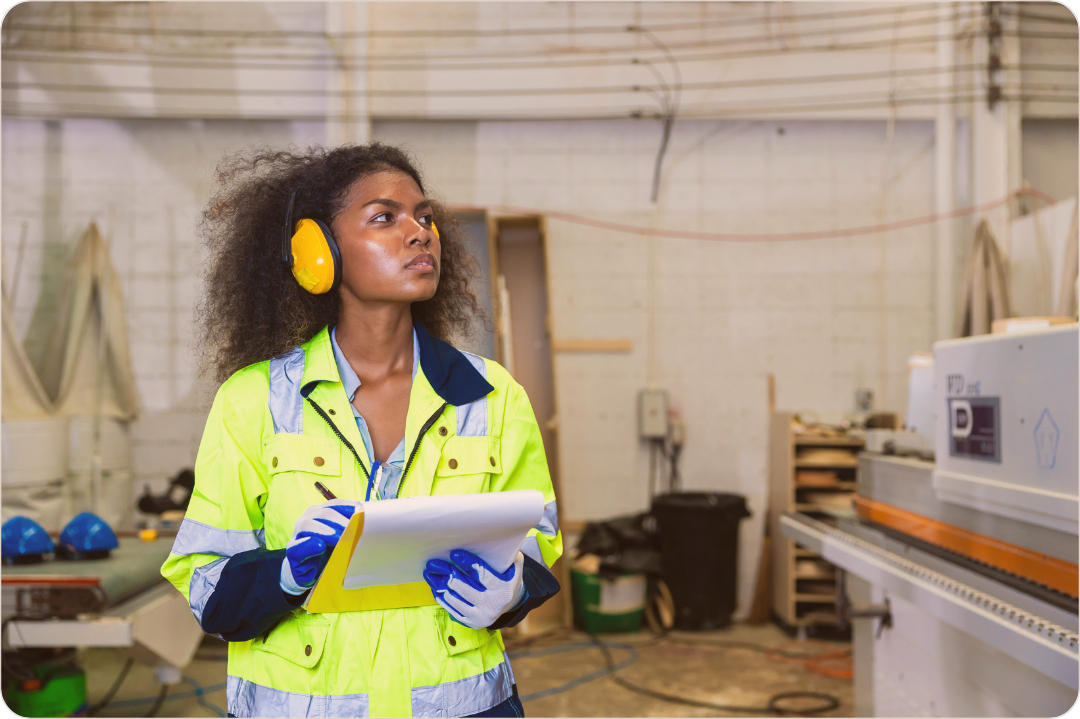New Jersey’s diverse economy includes healthcare, education, logistics, and public services—fields where many individuals perform tasks in isolation or with limited supervision. Whether it’s a home health aide working in a patient’s residence or a municipal worker maintaining infrastructure, these lone workers face distinct safety risks. Employers in New Jersey must recognize these risks and take proactive steps to protect workers, especially when immediate assistance is not available.
New Jersey operates a state OSHA plan—but only for public-sector workers. This means that safety enforcement for state and local government employees falls under the jurisdiction of the New Jersey Public Employees Occupational Safety and Health (PEOSH) program. For the private sector, all occupational safety standards and enforcement are managed directly by federal OSHA.
On This Page
Our Guide To Lone Worker Safety Policy And Legislation In New Jersey
Because New Jersey uses a partial OSHA-approved plan, employers must know whether their workforce falls under federal OSHA (private sector) or PEOSH (public sector). Both entities require employers to provide safe working conditions, but neither offers a specific regulation focused solely on lone workers. Instead, the General Duty Clause applies, mandating that employers eliminate recognized hazards, including those associated with working alone.
The New Jersey Department of Labor and Workforce Development (NJDOL) provides additional labor guidance and may support safety initiatives through education and outreach, though it does not directly enforce OSHA or PEOSH standards.
How New Jersey Defines A Lone Worker
New Jersey law does not formally define the term “lone worker,” nor does federal OSHA. However, the concept broadly applies to employees who work without direct supervision and who may be unable to receive immediate help in an emergency.
In New Jersey, typical lone worker roles include:
- Home health and hospice care workers
- Social workers and case managers visiting clients
- Municipal and public utility employees on solo duty
- Security personnel and maintenance staff working night shifts
- Delivery and logistics drivers operating independently
- Custodial or facilities staff working after hours
Recognizing these roles is essential for employers aiming to manage safety risks and implement preventive measures.
Employing A Lone Worker In New Jersey
Whether governed by federal OSHA or New Jersey’s PEOSH program, employers must assess the risks involved in isolated work situations and put proper safety protocols in place. This includes evaluating both physical hazards (like falls, violence, or environmental exposure) and communication barriers that can delay emergency response.
Recommended best practices include:
- Risk Assessments: Identify hazards specific to lone work scenarios.
- Emergency Planning: Develop detailed protocols for responding to incidents without nearby assistance.
- Regular Monitoring: Implement check-in systems or automatic alert tools.
- Technology Integration: Equip employees with mobile safety apps or wearable alert devices.
- Training: Prepare lone workers with situational awareness, hazard identification, and reporting procedures.
Learn How You Can Protect Your Employees With Loneworker.com

With Loneworker.com you can be equipped with the knowledge and the means to protect your employees and protect your business. Contact us today to learn more about how Loneworker.com can protect you and your employees.
How The Safe Lone Worker App Can Protect New Jersey Lone Workers And Employers
The Safe Lone Worker app offers an effective solution for businesses and agencies in New Jersey that employ individuals who work independently. The app supports features like scheduled check-ins, panic alerts, man-down detection, and real-time GPS tracking, allowing supervisors to monitor employees remotely while giving workers fast access to emergency help.
Whether used by home health agencies, municipal field teams, or delivery drivers, this app helps employers comply with both OSHA and PEOSH expectations, reducing risk while improving peace of mind.
New Jersey Lone Worker Policies
New Jersey’s Public Employees Occupational Safety and Health (PEOSH) program provides workplace safety oversight for state and local government employees, requiring employers in the public sector to maintain environments free from recognized hazards. For private-sector employers, federal OSHA regulations apply. In either case, there are no lone worker-specific rules, but general safety duties still apply under the General Duty Clause.
This guide is intended for general informational purposes and should not replace legal or regulatory consultation.
New Jersey Lone Worker Resources
OHS Contact Centre
- 1-866-415-8690
CDC / NIOSH
- 800-232-4636

Affordable Monitoring For Lone Workers In New Jersey

-
 Monitoring Your Employees' Safety
Monitoring Your Employees' Safety
-
 GPS Tracking And Monitoring
GPS Tracking And Monitoring
-
 Man Down Panic Alerts
Man Down Panic Alerts
-
 24/7 Protection Anywhere
24/7 Protection Anywhere
Lone Worker Legislation
Lone Worker Safety Policies And Legislation By State
-
 Alabama State Safety Policies And Legislation
Alabama State Safety Policies And Legislation
-
 Alaska State Safety Policies And Legislation
Alaska State Safety Policies And Legislation
-
 Arizona State Safety Policies And Legislation
Arizona State Safety Policies And Legislation
-
 Arkansas State Safety Policies And Legislation
Arkansas State Safety Policies And Legislation
-
 California State Safety Policies And Legislation
California State Safety Policies And Legislation
-
 Colorado State Safety Policies And Legislation
Colorado State Safety Policies And Legislation
-
 Connecticut State Safety Policies And Legislation
Connecticut State Safety Policies And Legislation
-
 Delaware State Safety Policies And Legislation
Delaware State Safety Policies And Legislation
-
 Florida State Safety Policies And Legislation
Florida State Safety Policies And Legislation
-
 Georgia State Safety Policies And Legislation
Georgia State Safety Policies And Legislation
-
 Hawaii State Safety Policies And Legislation
Hawaii State Safety Policies And Legislation
-
 Idaho State Safety Policies And Legislation
Idaho State Safety Policies And Legislation
-
 Illinois State Safety Policies And Legislation
Illinois State Safety Policies And Legislation
-
 Indiana State Safety Policies And Legislation
Indiana State Safety Policies And Legislation
-
 Iowa State Safety Policies And Legislation
Iowa State Safety Policies And Legislation
-
 Kansas State Safety Policies And Legislation
Kansas State Safety Policies And Legislation
-
 Kentucky State Safety Policies And Legislation
Kentucky State Safety Policies And Legislation
-
 Louisiana State Safety Policies And Legislation
Louisiana State Safety Policies And Legislation
-
 Maine State Safety Policies And Legislation
Maine State Safety Policies And Legislation
-
 Maryland State Safety Policies And Legislation
Maryland State Safety Policies And Legislation
-
 Massachusetts State Safety Policies And Legislation
Massachusetts State Safety Policies And Legislation
-
 Michigan State Safety Policies And Legislation
Michigan State Safety Policies And Legislation
-
 Minnesota State Safety Policies And Legislation
Minnesota State Safety Policies And Legislation
-
 Mississippi State Safety Policies And Legislation
Mississippi State Safety Policies And Legislation
-
 Missouri State Safety Policies And Legislation
Missouri State Safety Policies And Legislation
-
 Montana State Safety Policies And Legislation
Montana State Safety Policies And Legislation
-
 Nebraska State Safety Policies And Legislation
Nebraska State Safety Policies And Legislation
-
 Nevada State Safety Policies And Legislation
Nevada State Safety Policies And Legislation
-
 New Hampshire State Safety Policies And Legislation
New Hampshire State Safety Policies And Legislation
-
 New Jersey State Safety Policies And Legislation
New Jersey State Safety Policies And Legislation
-
 New Mexico State Safety Policies And Legislation
New Mexico State Safety Policies And Legislation
-
 New York State Safety Policies And Legislation
New York State Safety Policies And Legislation
-
 North Carolina State Safety Policies And Legislation
North Carolina State Safety Policies And Legislation
-
 North Dakota State Safety Policies And Legislation
North Dakota State Safety Policies And Legislation
-
 Ohio State Safety Policies And Legislation
Ohio State Safety Policies And Legislation
-
 Oklahoma State Safety Policies And Legislation
Oklahoma State Safety Policies And Legislation
-
 Oregon State Safety Policies And Legislation
Oregon State Safety Policies And Legislation
-
 Pennsylvania State Safety Policies And Legislation
Pennsylvania State Safety Policies And Legislation
-
 Rhode Island State Safety Policies And Legislation
Rhode Island State Safety Policies And Legislation







